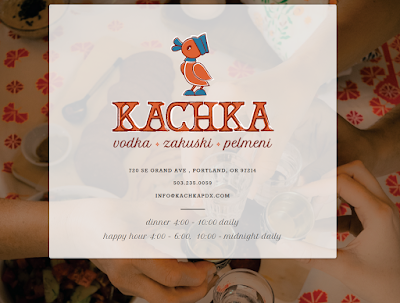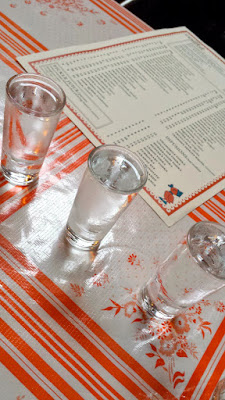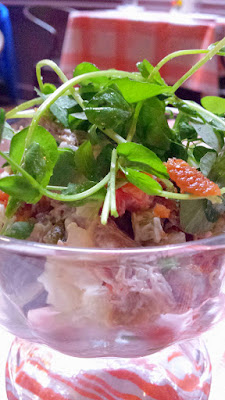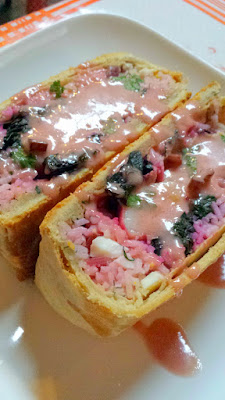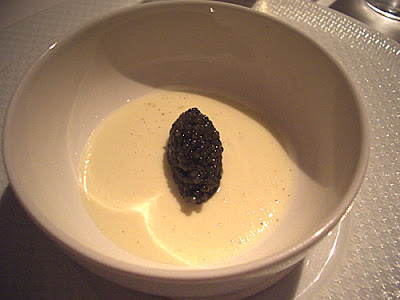I got a bit busy the first quarter of 2015, so temporarily dropped out of my online book club the Kitchen Reader (plus I was reading some books for Blogging for Books). But, I’m back with the book club this month of May, especially as I had a hand in suggesting the book for May 2015 (well, one of 3 people who wanted to read the book! For May we have the Book Club Review of Food: A Love Story by Jim Gaffigan (chosen by Vicki of I’d Rather Be At The Beach, Stephanie of Kitchen Frolic, and myself)

The reason why I think Food: A Love Story appealed to so many of us is that it’s a book about food from a stand-up comedian, and how often do you read a book about food that is amusing because it pokes fun while loving food? Jim admits he doesn’t really have any qualifications as a food writer. He has no background in professional cooking or working in the industry, he even shys away from calling himself a foodie because he doesn’t go on culinary escapades or seek out new restaurants or interesting dishes.
Instead, he calls himself an “Eatie”. He admits he doesn’t research food destinations in determining where to eat when he travels – he just asks for recommendations from locals and hopes for the best. At the same time though, he also admits that he often finds himself thinking about he will eat while in the midst of eating.
He thinks the best food adviser is someone
“pudgy or just a little overweight. This makes it clear they have a somewhat unhealthy relationship with food, but not a clinical problem. They are eating beyond feeling full. Sure, I am describing my own body type, but that’s why I am qualified to write this book about food. What other credentials do you need, really? Stop being a snob. Read the book already.”
If that introduction to himself isn’t enough to charm you, let me also state you should read his book especially because while he humbly says he is just an every man of regular food, Jim is humorously observant and insightful at recognizing how food makes people feel while also making fun of food culture and how food is so intertwined in our lives.
For instance, he observes in the chapter Proud American
“There are many elements that make up the American attitude towards food, but some are consistent. There always seems to be dissatisfaction with, and constant need to improve upon, the status quo of food. Americans are never satisfied when it comes to a food item… It’s the new American Manifest Destiny. We are the ones who for some reason needed a potato chip that tastes like steak and Jim Beam Jalapeno-flavored sunflower seeds.”


Or, about our attitudes towards all you can eat buffets:
“If the buffet is twenty bucks, you must eat at least twenty dollars’ worth of food. If you eat more food, you make money right?… When I approach a buffet, aside from seeing it as a challenge, there is a compliant part of me that hears ‘all you can eat’ and says ‘Okay, I will try my best, I don’t want to let you down, buffet’.”
There are 60 some chapters in this book, which is about 300 pages long, so each chapter is at most only a handful of pages, which is great for flipping through to read chapters in any order you want before bedtime, on a plane, on the beach, under the trees digesting between plates at a picnic at the park, maybe a lunch break… And, it could be a great book to listen to while driving as well because of the short nature of the chapter.
Each chapter is very conversational and storytelling in tone, and you will often find yourself smiling, maybe even laughing. Pretty much what you would expect listening to a stand up comedian, but you are reading instead. Each chapter is a fun, easy read and you will probably find yourself reading several chapters in a sitting.
That said, this is not the kind of book that you just read straight through – it is better to get doses at a time. For instance, you might find several chapters in a row about being fat, and several about general unhealthy eating, and then several on types of specific food item (steak, pizza, hot dogs, reubens, gyros, cheeseburgers, fries, vegetables, fruits, bottled water, bacon, cheese, ketchup, cake, etc. He is very thorough, haha!), then various types of dining experiences from restaurants, fast food, food courts to food delivery.
It’s like each chapter is a segment of a stand up show and depending on the audience reaction he either keeps riffing on it or moves on to a new topic. Depending on your feelings about a topic some may work with you – some may not – just give another chapter a try. It’s just finding that one comment or observation to get you to crack a smile.
My favorite chapters when I read the book were
- The Buffet Rule
- Not Slim Jim
- The Geography of American Food, plus the ensuing chapters that explore each of those regions
- Seabugland
- Eating BBQland
- Super Bowl Sunday Foodland
- Steakland
- Mexican Foodland
- Wineland
- Coffeeland

- Salad Days
- The Cheeseburger – America’s Sweetheart
- Museum of Food
- The Royal Treatment
- My Longtime Companion
- Looking for Mr. Goodburger
- Breakfast: A Reason to Get Out of Bed
- The Bagel: My Everything
What do you think of Jim’s definition of foodie and eatie? What do you think defines a foodie, and do you identify with being a foodie or not? Would you call yourself an eatie? How would you identify yourself in terms of food?
If you are interested in Kitchen Reader check out the link!The gist of our casual online book club is there is a new book selected for every month. Each book is related to food, and members write a review on their blog during the last week of that month. It’s interesting to read the round-up of reviews at the beginning of the month and see what other members have thought of the same book.
The next books in our list are:
- June 2015: The Third Plate: Field Notes on the Future of Food by Dan Barber (chosen by Melissa of Melos bookshelf and Emily of Highly Social Media)
- July 2015: Delicious: A Novel by Ruth Reichl (chosen by Amanda of Omar Niode Foundation and also myself)









